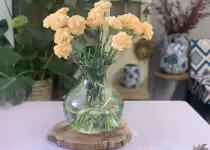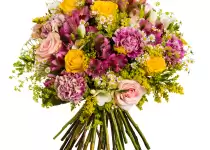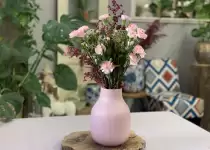Using carnations in bouquets - hints and tips
01.08.2024 | Dana Rohová

Carnations (genus Dianthus) are one of the oldest and most popular ornamental flowers in the world. Their history goes back thousands of years and includes rich symbolism, cultural significance and a wide range of uses. This article will focus on a detailed examination of the history, evolution, species and various uses of carnations.
History and development
Carnations are native to the Mediterranean region and their cultivation dates back to antiquity. The Greek word 'dianthos', from which the carnation's name is derived, means 'flower of the gods' (from the words 'Dios' - the god Zeus and 'anthos' - flower). In ancient Greece, carnations were used in religious ceremonies and celebrations, as evidenced by many ancient paintings and literary records.
During the Middle Ages, carnations became popular in Europe, especially in monastic gardens, where they were cultivated not only for their beauty but also for their medicinal properties. In the Renaissance, carnations spread to noble gardens and became a symbol of love, purity and devotion. During the 16th and 17th centuries, many cultivars were bred with different colours and flower shapes.
Did you know, that we will deliver not only a bouquet of carnations, but also other flowers all over the Czech Republic? The delivery address can be in Karlovy Vary, České Budějovice or any place in our country.
Types of carnations
The genus Dianthus includes more than 300 species that vary in shape, size and flower colour. The best known species include:
Dianthus caryophyllus (Garden Carnation) - The most commonly grown species, known for its full, fragrant flowers in a variety of colours from white to pink to red. The garden carnation has a long history of cultivation and many different varieties.
Dianthus barbatus (Bearded Carnation) - This species, often called 'Sweet William', is popular for its compact inflorescence and wide range of colours. The bearded honeysuckle is a biennial or short-lived perennial and is known for its hardiness and ease of care.
Dianthus chinensis (Chinese Knotweed) - Native to Asia, it is characterised by smaller flowers but a very rich colour palette. This species is popular in gardens and floral arrangements for its long flowering time and vibrant colours.
Dianthus deltoides - A low, carpet-like perennial with small flowers. This species is ideal for rock gardens and as a ground cover. Its flowers are usually pink or red with distinctive margins.
A selection of carnations
When choosing carnations, it is important to focus on the freshness of the flowers. Choose carnations with sturdy stems and undeveloped or partially developed flowers. Avoid flowers with wilted or damaged petals. Choose colours that match the overall style and colour palette of the bouquet. Red carnations symbolize love, white carnations purity and pink carnations gratitude and admiration.
Preparing carnations
Before arranging, the carnation stems should be cut at a 45 degree angle to increase the area for receiving water. Use a sharp knife or secateurs to avoid damaging the stems. Remove the lower leaves that would be under water in the vase to prevent rot and extend the life of the flowers. Also soak carnations in lukewarm water for at least an hour before arranging to hydrate them and gain strength.
Arranging a bouquet
- Flower combinations: Carnations combine well with other flowers such as roses, tulips, lilies or gerberas.
- Texture and height: Play with the texture and height of the flowers in the bouquet. Carnations can form the middle layer, while taller, more delicate flowers can be placed higher up, and lower, fuller flowers on the bottom.
- Symmetry vs. asymmetry: Consider whether you want a symmetrical or asymmetrical bouquet. Symmetrical bouquets are more traditional, while asymmetrical bouquets can give a more modern feel.
Caring for the bouquet
Change the water in the vase regularly (at least every 2-3 days) and add fresh floral preservatives if available. Re-cut the stems by about 1-2 cm at each water change so that they are still able to take up water well. Place the bouquet in a cool place out of direct sunlight and draughts to prolong its shelf life.
Special tips
If the carnation stems are too fragile or you need to create a specific shape, you can use thin floral wire to stiffen them. Floral tape or rubber bands can be used to fix the flowers in a specific position in the arrangement. Carnations can also be used in modern arrangements, such as flower balls or floral wreaths, which can serve as non-traditional decorations at weddings or other celebrations. Mini carnations are also suitable for first date bouquets.
Conclusion
Carnations are one of the most important flowers in the history of horticulture and floristry. Their rich history, diverse species and wide range of uses make them indispensable in many fields. Growing carnations not only enriches gardens with their beauty, but also brings joy and aesthetic pleasure to flower lovers around the world.


